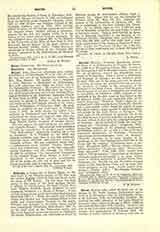

Bubastis, a titular see of Lower Egypt, on the right bank of the Pelusiac branch of the Nile, near the modern Zagazig, where its ruins are shown under the name of Tell Bastah. Its true name was Bast owing to the name of the local goddess Bastet; it became in Old-Egyptian Per-bastet (Coptic Boubasti, Hebrew Pi-beseth, Greek Boubastis or more commonly Boubastos, i.e. House of Bastet). It was a place of importance under the twenty-third dynasty about 950-750 B.C. When the eastern part of Lower Egypt was divided into Augustamnica Prima in the north and Augustamnica Secunda in the south, Bubastis was included in the latter, whose capital was Leontopolis (Hierocles, Synecdemos, 728, 4), as the chief town of the Bubastites nomos, and like every Egyptian nomos was the seat of a bishopric. Its bishop, Harpocration, was mentioned at Nicaea by Meletius among his well-wishers (Athan. Apol. c. Arianos, 71). About 340 the see was occupied by Hermon (Acta SS., May, III, 61). Julianus was present at the Latrocinium of Ephesus, 449. The see is mentioned in Georgius Cyprius (ed. Gelzer, 705). In the Middle Ages its fate is blended with that of Khandek, a Jacobite see near Cairo, to which it had been united. Thus in 1078 Gabriel, ep. Basta, quae et Khandek, interfered in the election of the Patriarch Cyrillus (Renaudot, Hist. patriarch. Alexandr. 450, 458, 465), and in 1102 John took a share in the consecration of the Patriarch Macarius II (ibid., 482). Under the Patriarch Cyrillus III. (1235-43), the see is often mentioned, but without the name of its titular.
L. PETIT

